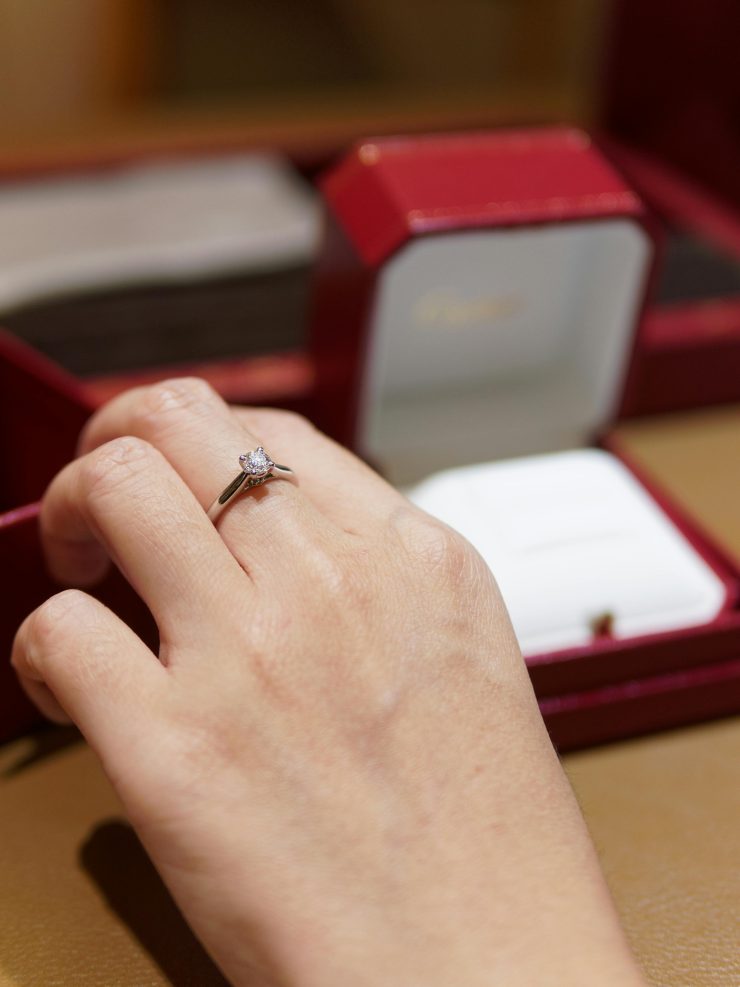Once you have successfully sold a diamond, one of the most critical post-sale responsibilities is understanding how the transaction affects your tax obligations. In many jurisdictions, the sale of personal assets such as diamonds may trigger capital gains tax if the sale price exceeds the original purchase cost or basis. The gain is typically calculated by subtracting the basis from the final sale amount. If you inherited the diamond or received it as a gift, the basis may differ, potentially being the fair market value at the time of inheritance or the donor’s basis, respectively. It’s important to distinguish between short-term and long-term capital gains as well, as the holding period affects the tax rate applied. Long-term capital gains, for example, usually benefit from more favorable rates than short-term gains. Furthermore, tax treatment can also vary by country, state, or province, so consulting a tax professional familiar with jewelry sales is advisable. Ignoring these responsibilities can lead to unexpected tax liabilities or penalties, especially if the proceeds were significant.

Determining the Cost Basis of Your Diamond
Accurately calculating your cost basis is essential when selling diamonds, particularly for tax reporting purposes. The cost basis refers to the original price you paid for the diamond, including any additional expenses such as appraisal fees, certification costs, or custom design charges if the diamond was part of a piece of jewelry. If you are unable to locate your purchase receipts, you might estimate the basis using historical market values or by consulting with a professional appraiser who can provide a valuation as of the original purchase period. For inherited diamonds, the cost basis is usually the fair market value on the date of the original owner’s death. For gifted diamonds, the basis is generally the same as the donor’s original purchase price unless the fair market value at the time of the gift is lower, in which case complex rules may apply. Errors in estimating the basis can lead to underreporting or overreporting gains, potentially affecting the amount of taxes owed. As such, it’s often worth the effort to retrieve as much original documentation as possible or work with a qualified appraiser or tax advisor.
Reporting the Sale to Tax Authorities
When it comes to reporting the sale of diamonds to tax authorities, accuracy and transparency are key. In the United States, for instance, the Internal Revenue Service (IRS) expects you to report capital gains on Schedule D of your Form 1040. You will need to include the date you acquired the diamond, the date you sold it, the selling price, your cost basis, and the resulting gain or loss. If the diamond was sold through an auction house or a jeweler, you may also receive a 1099 form if the proceeds meet certain thresholds. Internationally, tax reporting processes can vary widely; some countries require self-disclosure on personal asset gains, while others may not tax capital gains on personal jewelry at all. If the diamond was part of a business inventory or you are a frequent seller, the sale may be treated as business income, triggering additional tax obligations such as value-added tax (VAT) or income tax. Failure to report the sale correctly may result in audits, interest, and penalties, particularly if the tax authorities flag the transaction as significant. Therefore, consulting a tax preparer familiar with luxury item transactions can help avoid costly mistakes.
Keeping Proper Documentation for Future Reference
Proper documentation plays a crucial role not only during the tax reporting process but also for future financial and legal purposes. After selling your diamond, it is recommended to retain a comprehensive file that includes the original purchase receipt, appraisal documents, sales invoice, communication with the buyer, and any tax forms received. Such a record can support your tax return in case of an audit, substantiate the cost basis in case of future questions, and even assist with estate planning or insurance coverage evaluations. If the diamond was sold through an intermediary such as a consignment dealer, auction house, or online platform, also keep any commission statements or contracts outlining the terms of the transaction. In some cases, buyers may request a provenance record or certification of authenticity, particularly for high-value or branded stones. Keeping these documents well-organized in both digital and physical formats ensures that you can respond promptly to inquiries from tax authorities or financial advisors. In short, a well-maintained documentation trail reduces risks, enhances transparency, and supports compliance with legal and tax obligations.
Considering the Role of Estate Planning After a Sale
Another frequently overlooked but important consideration following the sale of a diamond is its potential impact on estate planning. Proceeds from the sale can change the overall value of your estate and may require updates to your will, trust documents, or beneficiary designations. If the diamond was originally earmarked for inheritance, and you chose to sell it instead, this could alter your estate’s distribution plan or require a substitution of assets for equitable treatment among heirs. Additionally, if the sale resulted in significant financial gain, you may need to assess the implications for estate tax thresholds or future gifting strategies. Some individuals choose to invest the proceeds into other assets or financial instruments, which may carry their own tax and estate planning implications. Collaborating with an estate planner or financial advisor can help you determine whether the diamond sale affects your long-term legacy goals. Furthermore, if the diamond sale was executed by an heir or estate executor, the revenue may need to be documented and distributed according to probate or trust guidelines. This further emphasizes the importance of legal compliance and strategic planning post-sale.

Allocating and Investing the Proceeds from the Sale
Once the diamond is sold and the net proceeds have been received, thoughtful financial planning becomes the next logical step. Depending on the size of the transaction, the funds may represent a significant liquidity event that warrants strategic consideration. Some individuals may choose to reinvest the proceeds in diversified assets such as mutual funds, stocks, real estate, or retirement accounts, aiming to generate long-term wealth or passive income. Others may prefer to use the funds for immediate goals, including debt repayment, major purchases, or educational expenses. From a tax planning perspective, reinvesting into certain tax-advantaged accounts could reduce overall liability or defer taxation. It is advisable to consult with a certified financial planner or investment advisor to determine the best course of action based on your personal risk tolerance, financial goals, and investment timeline. Keeping detailed records of how the proceeds are reinvested or spent is also essential, particularly if future audits or estate planning documentation is required. In some jurisdictions, a sudden increase in capital from such a sale might impact your eligibility for financial aid or tax credits, so comprehensive financial analysis is crucial.
Managing Emotional and Ethical Considerations
Selling a diamond, particularly one with sentimental value such as an engagement ring or family heirloom, often involves emotional and ethical dimensions beyond the financial implications. After the sale, individuals may experience a sense of loss, especially if the diamond was tied to a significant life event or passed down from loved ones. In such cases, emotional processing and closure may take time and might benefit from reflection or even counseling. Ethically, some sellers feel a responsibility to ensure the diamond enters the secondary market through reputable channels. This is particularly relevant when considering concerns over conflict diamonds or unethical labor practices. Sellers may want to verify that the buyer—whether an individual, a business, or an institution—operates with transparency and accountability. Others might choose to donate a portion of the proceeds to causes aligned with their values, such as organizations promoting ethical mining or women’s empowerment. While these aspects may not have legal consequences, they can be deeply relevant on a personal level and influence how one views the transaction in hindsight.
Evaluating the Impact on Insurance Coverage
Selling a diamond also has implications for your insurance portfolio. If the diamond was previously covered under a personal jewelry insurance policy or as a scheduled item within a broader homeowner’s policy, that coverage should be canceled promptly after the sale to avoid paying unnecessary premiums. It’s a good idea to contact your insurance provider with documentation of the sale to formally remove the item from the policy. Conversely, if you reinvest the proceeds into other valuables or high-worth items such as luxury watches, artwork, or additional jewelry, you may need to adjust your coverage to reflect the new assets. Some insurers require appraisals or receipts to add new items to a policy, and keeping those records organized will help streamline the process. From a liability perspective, failing to update your coverage could expose you to risk if future claims are contested due to inaccurate asset reporting. In short, insurance considerations should not be overlooked in the post-sale process, especially when dealing with high-value items such as diamonds.
Consulting Professionals for Comprehensive Guidance
Given the multifaceted responsibilities that follow the sale of a diamond, engaging qualified professionals can offer immense value. A tax advisor or CPA can ensure accurate capital gains calculations and proper reporting, reducing the risk of audits or penalties. A financial planner can help you make sound decisions about allocating proceeds, while an estate planner ensures that your wealth transfer strategies remain aligned with your overall goals. Additionally, legal professionals can assist with documentation, especially in complex cases involving inheritance, divorce, or disputed ownership. Even professionals such as appraisers and gemologists may play a post-sale role, particularly if questions arise regarding the diamond’s provenance or valuation. In a high-value transaction, a multidisciplinary approach provides not only peace of mind but also legal, financial, and emotional protection. This layered support can transform what might otherwise be a burdensome or confusing process into a well-managed and beneficial financial event.